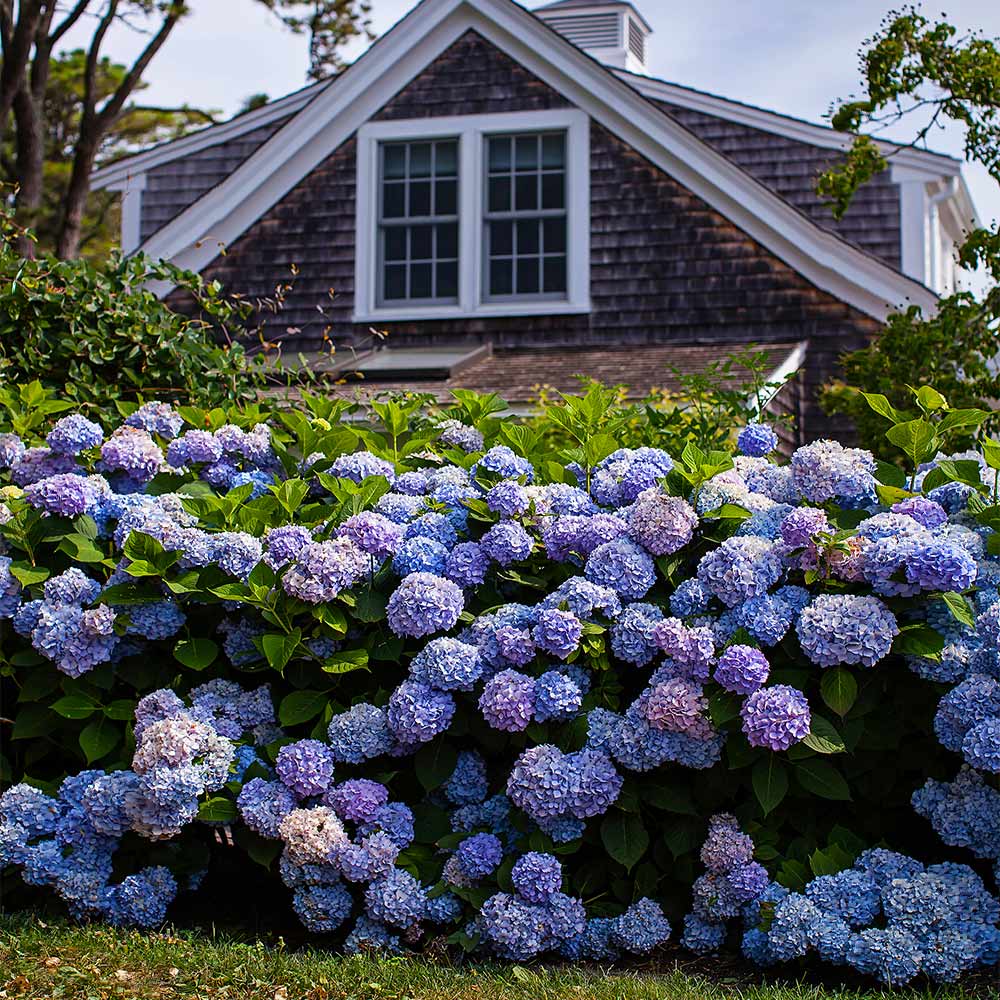Rhode Island Plants
Filters
Plant Type
Flower Color
Sunlight
Mature Height
Plant Characteristics
Bloom Season
Growth Rate
Indoor Light Requirements
Pollination
Whether you live in Providence, Newport, or somewhere in between, the Ocean State is a gardener's dream with its abundant, gorgeous native plants and the ability to easily support popular non-local species.
To get you started, we’ve put together everything you need to know about Rhode Island trees, shrubs, and flowers so you’ll be well-equipped to tackle growing the best plants possible in Rhode Island.
Rhode Island Plants Care and Growth
Each plant requires a unique care plan. When planning your garden, ensure that your planting area matches the plant requirements and that you have the time and resources to care for your new flower, shrub, or tree. To get you started, we’ve compiled gardening tips and facts every Rhode Islander should know.
Species: Native species such as Blue Iris, Pink Corydalis, and Turk's Cap Lily, among many more, are excellent choices for your yard because they have adapted well to Rhode Island’s climate. There are also a plethora of non-native plants that flourish in Rhode Island’s growing zones.
Climate: Once you know Rhode Island’s climate, selecting the right plant for your yard will be a breeze. The smallest state sits in USDA hardiness zones 6 and 7, meaning the average annual extreme minimum winter temperature ranges from -5 to 10 degrees Fahrenheit. Most of the state resides in Zone 6; however, the Ocean State’s largest cities – Providence, Warwick, and Cranston – are in Zone 7. Holistically, Rhode Island’s climate is known for an equal distribution of precipitation across all four seasons and a wide variance in temperature and weather. You’ll find that temperatures are warmer near the coast due to the effects of the Atlantic Ocean.
Frost date: The last frost date is your area's average final spring frost, which is determined using historical data. Knowing this date is vital for gardeners because it marks when you can start planting. It’s best to pinpoint your local frost date using The Old Farmer's Almanac. All you need is your zip code. For you “big city gardeners,” Providence, Warwick, and Cranston’s last frost date is April 17.
Soil: Most of the soil in Rhode Island was formed through glacier tills. This soil is sandy, loamy, and acidic with a medium coarse texture. Before you purchase a new plant, we advise testing your soil to learn its nutrients and pH level. It’ll set your new plant up for success.
Narragansett, the state soil, is well-draining and loamy and covers 12,000 acres. It can be found in Kent and Washington counties, as well as in North-central Connecticut and Western Massachusetts.
Rhode Island Plant Varieties
Creating a garden with native Rhode Island plants is a fantastic way to preserve local flowers and attract wildlife. If you go this route, more power to you. But it’s not your only option. Rhode Island’s climate is perfect for myriad non-native plant species. Here are a few of our favorites:
Perennials: Liven up your yard with gorgeous shades of purple and blue by planting Phenomenal Lavender, Russian Sage, or May Night Salvia. Go with Goldstrum Black-Eyed Susan, Bartzella Peony, or Banana Cream Shasta Daisy for a pop of yellow. The Brilliance Autumn Ferm is another beautiful choice if you’re looking for a fall color.

Shrubs: You can’t go wrong with the hardy Double Knock Out Rose, which is exceptionally well suited for Rhode Island. Other fan-favorite shrubs are Burning Bush, Pink Muhly Grass, and Lynwood Gold Forsythia.
Shade Trees: In the summer, temperatures in Rhode Island can reach between 72 and 86 degrees Fahrenheit. If you want to enjoy the warm weather, shade trees are a must-have. Popular shade trees include the Autumn Blaze Red Maple, Sugar Maple, Tulip Poplar, and Weeping Willow.
Evergreen Trees: Evergreens add much-needed visual interest during the cold-weather months. We recommend Thuja Green Giant, Leyland Cypress, Taylor Juniper, Emerald Green Arborvitae, Colorado Blue Spruce Tree, and Nellie Stevens Holly.

Ready to plant a tree? Browse our collection of well-known trees for sale Rhode Island gardeners love.
Common Questions about Rhode Island Plants
What plants did Rhode Island grow?
The Ocean State has many native flowers, scrubs, and trees. Popular native flowers include Yellow Wild Indigo, Rose Milkweed, Garden Phlox, Jewelweed, and the Common Blue Violet, Rhode Island’s official state flower.
If you’re looking for a home-grown shrub, check out Common Buttonbush, Pink Azalea, or Coastal Sweet Pepperbush.
Native trees include American Beech, Eastern Red Cedar, and Sassafras.
For a detailed list of native Rhode Island plants, see the Rhode Island Native Plant Guide, which the University of Rhode Island compiled.
What trees are native to Rhode Island?
In addition to the native trees listed above, Rhode Island is home to Red Maple and White Oak, both of which make excellent shade trees. If flowering trees are more your style, try Flowering Dogwood Tuliptree and Pin Cherry.
What fruit trees grow in Rhode Island?
Plenty! Fruit trees we recommend are the state’s official fruit, the Rhode Island Greening Apple, Sentry Peach, American Persimmon, and the Bosc Pear. When selecting a fruit tree, compare its “chill hours” – the minimum period of cold weather needed for the tree to blossom – to your area's weather.
What planting zone is Rhode Island?
Rhode Island crosses USDA Hardiness Zones 6 and 7. More specifically, the state sits in micro-zones 6b, 7a, and 7b, meaning the average annual extreme minimum winter temperature ranges from -5 to 10 degrees Fahrenheit in the cold season.






































































































































































































































































